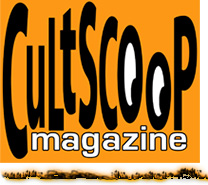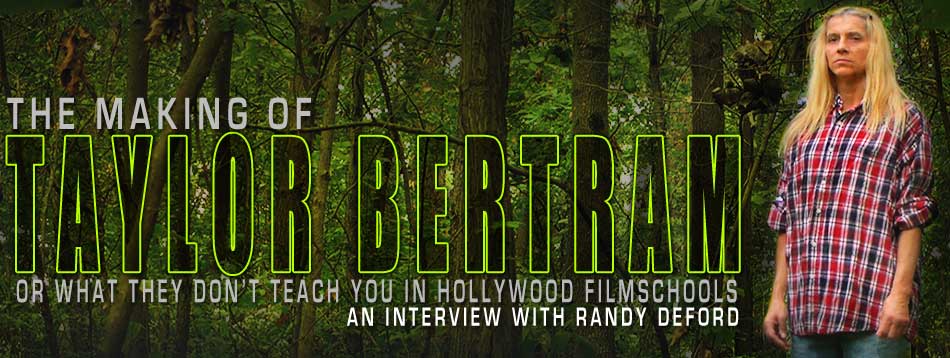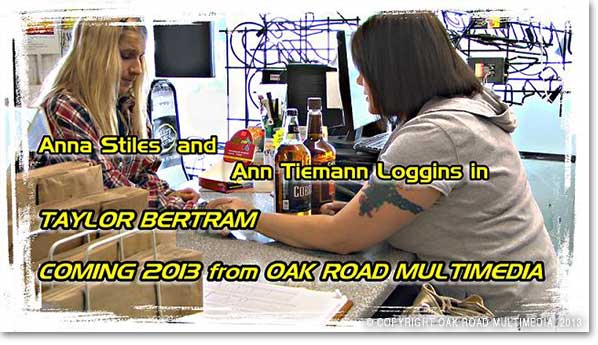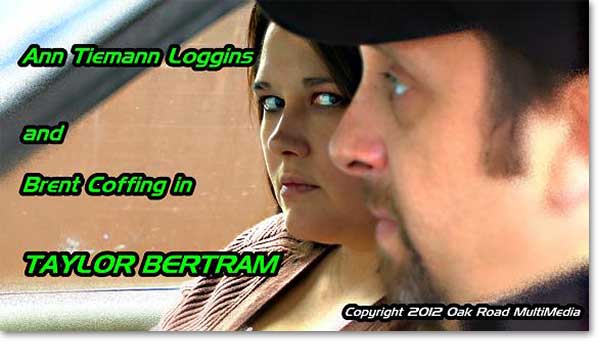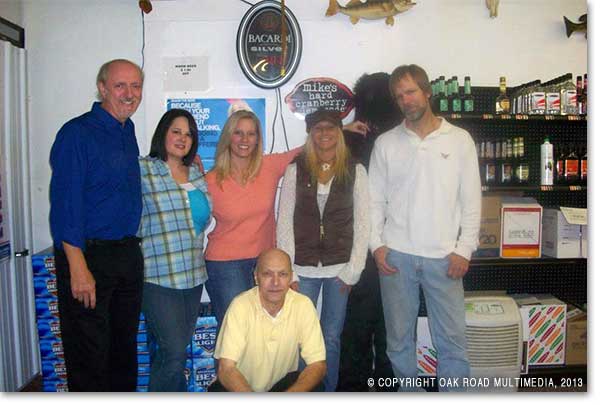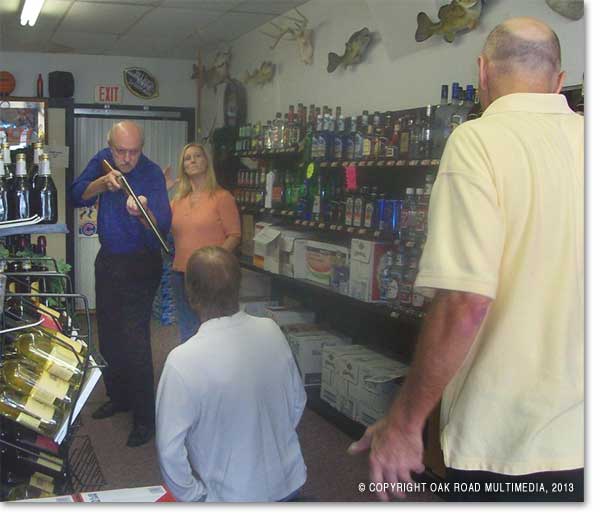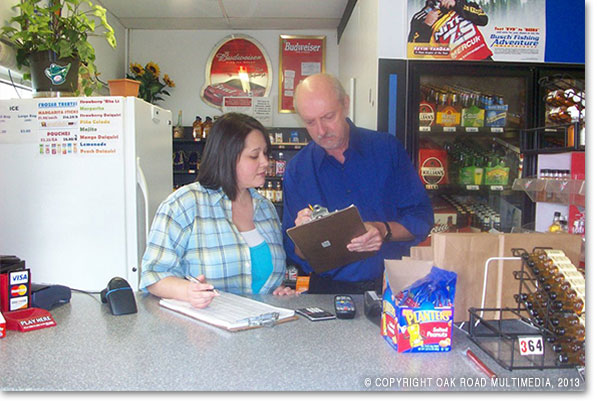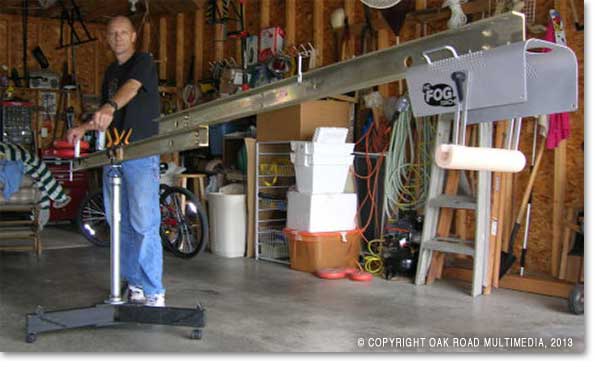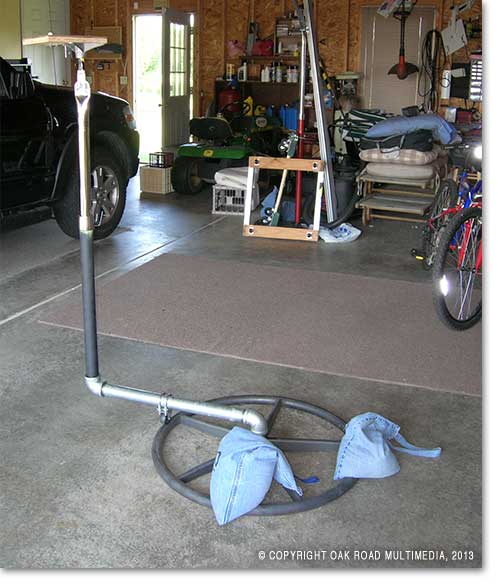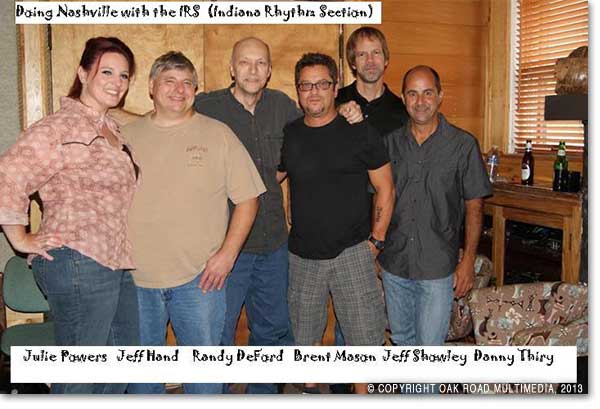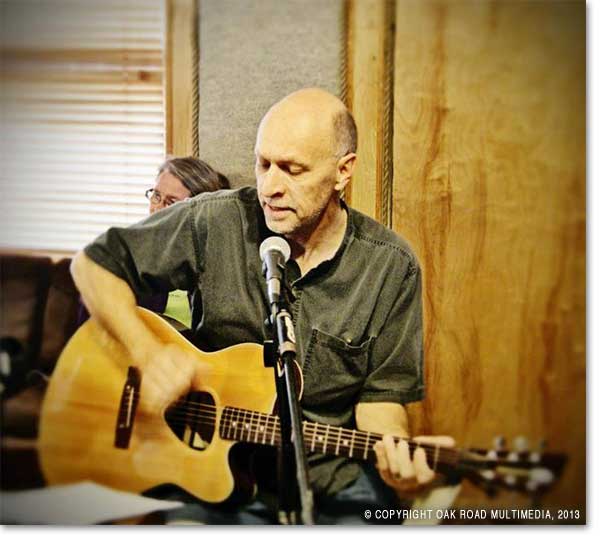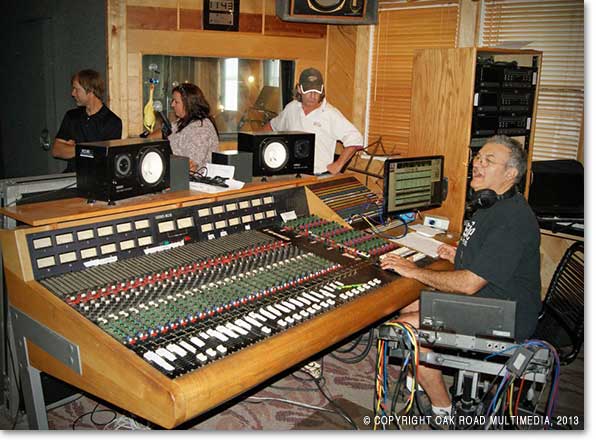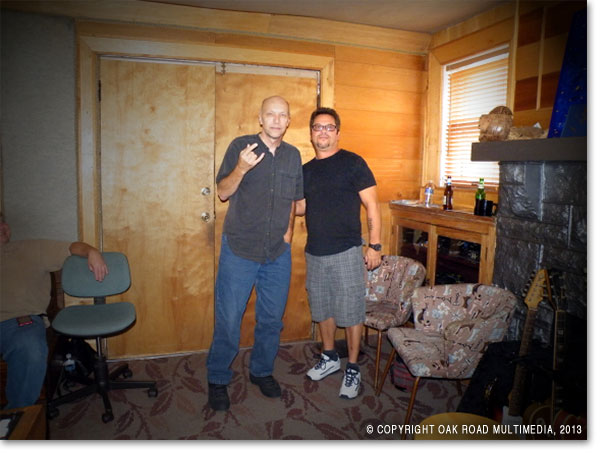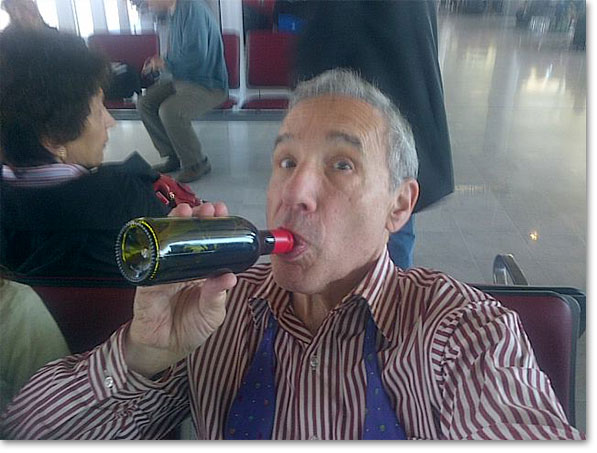|
||||||||||||||||||||||||||||||||||||||||||||||||||||||||||||||||||||||||||||||||||||||||||||||||||||||||||||||||||||||||||||||||||||||||||||||||||||||||||||||||
|
I like to write stories that lean toward crime dramas as they apply to a rural setting. I am just now starting to send it to festivals. My first reviews have been more than flattering, so that’s a kick-off I’ll take any time. It can’t be that good, but, hey! CM: You're a very prolific filmmaker. What inspires you? Are there any particular movies or books inspired you make Taylor Bertram? RAD: TAYLOR BERTRAM was more inspired by my state as far as the content. There are just a lot of small towns that tend to be filled with people who know everybody’s business, but leave well enough alone. I also know a lot of women who have been abused by boyfriends or husbands in their younger days and this story reflects a woman who decided not to leave but stay in the relationship. It’s a classic turmoil to me of good vs. bad….strong overpowering the meek. All my features have rural settings, so I guess that’s my schtick. But I also like to weave crime stories into rural backgrounds. There’s also the revenge ending… which is a favorite with me.
CM: If you compare what were the major challenges of of making a feature as compared to making a short film? RAD: Everything. The biggest challenge for me is locations. The things I am in control of such as storyline, editing, music, etc. are just a matter of time. But finding suitable locations can take a long time because you may get many rejections before someone let’s you use their property to shoot a film. I have better luck these days because I’ve made so many friends over the years that get into the films. The second biggest challenge is scheduling actors time. All my actors have full time jobs and most also have children. Finding the right time to get everyone together over a period of 6 to 8 months keeps you busy. Most short films can be shot in one day, but features are going to take 10 to 12 shoots over months. Pre-planning is vital in all areas. If you’re not organized or easily rattled, filmmaking may not be your forte. CM: Tell us about the local infra-structure for making films in Indiana. How easy or difficult was it for you to find cast, crew, equipment and locations?
CM: In TAYLOR BERTRAM beyond your actual expenses, how did community contacts extend your budget? RAD: I guess the one answer to that question is locations. Most of them cost nothing. CM: What decisions did you make on where to limit yourself and where to "go for broke?"
CM: Since you are director and writer you may have the whole film in your head, or do you first write a full screenplay? RAD: I don’t think there is ever a final draft until the film is done. I alter dialogue a lot after the beginning edits. Seeing what the interaction will be between certain characters helps me write better scripts because I can never visualize as well as the real thing playing out in front of me in the editor. I have created whole characters after I’ve seen some of the edited film. See, I never shoot everything and then post. I shoot, then edit what I shoot…and continue that process. That way, I can see part of the film and create better characters based on what the actors deliver.
CM: In planning do you use floorplans or story boards, or do you know exactly how it fits together? RAD: I only storyboard scenes that are complex. This way I previsualize what I need, draw it….then not think about it the day of the shoot. Since I handle most all crew activities myself, having one less thing to think about is a plus. But generally, I know what I want when I start shooting and leave myself wide open for changes. I also have a good habit of shooting everything I can. SD cards are cheap…if in doubt, always shoot it. This has proven itself so many times because the shot you think was the best isn’t as good as one you shot due to a moment in time when inspriration was on the set. I love those surprises when I edit. Makes me look like I know what I’m doing and planned it all out. It’s called dumb luck. Don’t tell anybody. CM: Tell us about your actors and why you chose them. RAD: That’s a great question. I love my actors because they act for all the right reasons. I have used some semi-pro actors with less than good results. I also have little patience with actors who are more concerned with critiquing only their performances and don’t give a shit about how they interact with other actors. We all have egos and desires to excel, but a team approach is a lot more fulfilling. There was an actress who finished a film I thought had been scrapped.
Another practice I do not do ,that my peers do, is audition. I use a lot of the same players and I take their word if they suggest a new actor for a specific part I need. I know local filmmakers who make their friends audition for parts over and over. That seems ridiculous to me. If you've used them before, why make them go thru an audition? That logic escapes me. It's totally needed for theatre where pre-determined characters are needed… or for professional film where you get a great cross-section of talented candidates. But for local actors that you know? CM: When working with actors, do you go by the script, or do you like to improvise a lot? What works best for you? RAD: One of the more interesting books I read as a young man was TAO OF JEET KUNE DO by Bruce Lee. His philosophy was to learn all you can, then be flexible enough to use what works in a given situation and remove what doesn’t work. I think that’s the very definition of being flexible. Actors performances inspire me and I change things a lot…sometimes testing my actors patience. Then when they see the result, they just smile. That’s a payback in my book. And if an actor has an idea, I let them go with it. As I said, SD cards are cheap. Always put it down….always.
RAD: I have a small jib crane that will get me about 10 feet in the air….more if I put in on the back of my pickup truck. I have a 12 foot dolly system the sets up and tears down in about 2 minutes. I have a swing arm that gives me an easy 180 wrap-a-round of a person or object. I also have this strange spinner that lets be put the camera looking down and then rotate it slowly for spinning Hitchcock like shots from above. I have a side arm that mounts over the door of a vehicle and allows driving shots of people talking and a suction cup mounted arm that peeks thru the front window. All built from scrap metal and disgarded video gear. I also have this large boom that I use for the microphone that lets me have hands free while operating the camera. To me, shooting visuals and monitoring the dialogue are like two halves of a whole. I’ve always done both. I had a horrible audio experience once when I trusted another sound man…he ruined the whole project because the boom was 10 ft in the air and all the dialogue was useless. Any time I even think about trusting someone else with the sound, I remember that experience. I am very particular about the audio. If it’s good, I can make it better. If it’s bad, game over…no do-overs. CM: How big was your crew and what crew positions did you fill yourself? RAD: The most crew I have are people to drive vehicles, people to help with the jib and sometimes a person or two for script supervision or just help the actors in general. I do everything else myself. CM: You shot this film on video cameras. What video equipment did you use and what format do you finish on? Why did you make that choice? RAD: My choices for cameras are pretty much cost conscious. I have a recording studio and multiple computers, as well as music equipment and microphones. I have to budget my money because I have so many interests. So I try to choose what I feel is going to give me the best visuals for the dollar. I have always had a bias to Panasonic cameras. When I got my DVX-100B, I thought that was just the most versatile camera. Then along came the Hi-Def AG-HMC80 for about the same money. Being involved in video these days is exciting because of how quickly the field improves. The cameras these days are amazing to me. So the files I download to my editor are in 24P AVCHD format. I’m not a guy that will ever have a RED. I can’t justify spending thousands of dollars for something I don’t do for a living because I know the visuals are not as important as the story.
CM: Many films are now shot using DSLRs like the Canon 5D Mark II or the new Mark III. What are your thoughts about using DSLRs? RAD: I have no fact-based opinion because I’ve never used one. But all I’ve seen or heard of them is excellent. I’m for anything that looks good, I don’t care what type or style of cam. The result is all that matters. If a saltine cracker box worked, I’d have two. CM: Tell us about the post production process. What systems did you use to cut and mix the film? What was the workflow like? RAD: I have used Sony Vegas for years. I currently use Version 10.0. I would never use an editor I didn’t love to work in. It delivers all I need. I also use Sony Sound Forge for audio editing, although I do a lot of audio editing within Vegas. It’s capabilities are great if you search them out. People get comfortable with workspaces and today you can customize like never before. I also use all Windows based equipment with no complaints. This makes me very uncool since everyone else uses Apple products. I’ve never changed formats because I’ve never needed to. And not being one of the cool kids never bothered me…I’m too damn old to care about the politics of coolness. CM: You are a musician. Tell us about your choice of music. RAD: In film, music is all about setting a mood. It’s about filling up space, building anticipation or creating a soothing score that matches the visuals. It’s also one of the more time consuming parts of post because you have to experiment a lot.
I have a wide taste in music because I’ve been exposed to rock, country, jazz, bluegrass, gospel and folk. But, I really love to score orchestral pieces. They are the biggest challenge. I love MIDI, even though some say it doesn’t cut it, they simply are wrong. MIDI is a powerful tool with very little memory required. By nature, I’m a guitarist, but I prefer other instruments for my scores. I want to stay open minded on both music and FX. CM: Does being a musician influence you how you edit and direct? RAD: I don’t think so. I concentrate on the visuals and then the music is the last item that’s tweaked. Once a scene is edited, I can throw lots of music in to see what works best. I never have music in mind before the visuals. I don’t even really think about music until the rough edits are done. CM: How long did it take you complete the film? How much time did you spend of pre-production, production, and post? What helped you keep the cost down and minimize the time?
CM: How do you plan to release the film? RAD: I am just now starting to send it to festivals. My first review received 4 out of 4, so that’s a kick-off I’ll take any time. It can’t be that good, but, hey! The latest review was from a critic I’ve never met and he gave me a most flattering review. That’s an ego kick when people you never met think your stuff is good. I don’t market online..I stay with festivals because it’s just what I do. If people want to buy my films, they can contact me. That works well. CM: You're a veteran of the film festival circuit. Amazingly enough, you had 7 films in one regional festival! What is your experience with film festivals? How can they be useful and what are the downsides? RAD: I have had many festivals accept and screen multiple films, but never this many. But, this festival, the World Independent Film Expo (WIFE) in Richmond, KY is run by filmmakers who want to promote other filmmakers. That’s a climate I can thrive in. To have that many films screenings at the same event is very flattering to me. Since I am not connected to the organizers of the fest, it means they based their decisions on the content of the films with no politicking. I don’t know how it gets more sincere. Most festivals discriminate because that’s their function – to pick and choose a cross-section that will bring in an audience. When the politics is the main driver you keep the subject matter within a culture and the goal should be the exact opposite – to expand exposure by including other people’s work for comparison and enrichment. Anyone with a bit of life experience knows that nepotism makes the world go round.
CM: What lessons did you learn that could help other indie filmmakers attempt their feature films. RAD: That’s a big one. I think my biggest advice would always be to do as much as you can yourself. Being a multi-tasker is hard, but it pays off with the control you need to craft the finished product. Low-budget filmmaking is what it is…an entity unto itself, not like the Hollywood template. It cannot be the same as huge production studios nor can it use the same template for crew. I have friends that are dirt track racers. Their cars are lighter and cheaper and have a smaller audience appeal. But, they have no aspirations to be NASCAR or Indy because they have a fan base. They are fine with being sprint car and modified racers and are happy with their world and the family of people they race with. That’s the way I see microcinema. Be happy with the level you are at and try to elevate it to a new level. As far as the process, be meticulous in writing down ideas. You have to spend time going thru the story before you shoot it. There is nothing wrong with improvising, but that’s not a plan. Know what you want and add to it. Also, be patient with people. Don’t get agitated or emotionally absent. Be calm and focused. People enjoy working with people who have it together…I know I do. I hope I inspire people by being the kind of filmmaker they want to work with again. It’s not about ego..it’s about respect for other’s talents and ideas. Don’t be so impressed with your own talent that your not amazed by others. Sometimes the talent of the actors I use impresses me..and they give me ideas for new characters. You can’t buy that kind of creativity because it’s spontaneous.
RAD: In early March we were able to get an interview with actor Tony Todd (CANDYMAN, FINAL DESTINATION). He was very up front with his comments. When we told him we had hoped to also get actor Tom Savini (DJANGO UNCHAINED, CREEPSHOW), but he had to cancel, Tony grabbed his cell phone, called Savini and hassled him about not giving us an interview, yet...in good fun, of course. CM: Was there any particular highlight of that interview? RAD: At one point, Tony asked how many titles Lloyd was distributing now. I told him I did not know, as far as pure Troma product, but that he had over 1,000 titles. After an appropriate “What!”, his comment was “and that son-of-a-bitch won’t buy my beer?”. He then pointed to the camera and said, “Turn that thing back on”. Then, he pleaded to Lloyd that with over 1,000 titles indistribution, he could afford to buy a guy a PBR.. and then blurted a couple explitives. He was quite accommodating. CM: Can you spill the beans on any other filmmakers in the future of this project? RAD: I tend to keep that information close to my chest since scheduling so many very busy people is a challenge. I will say we have confirmation on John G. Avildsen (ROCKY, KARATE KID) due to his working with Lloyd on several projects. Lloyd was both the location manager and played the part of a drunk in Rocky. Lloyd probably provided an easy heave for Stallone in that scene just outside the bar. I know a director of his stature and success brings a continued relevence to this doc. The people involved have been enthusiastic, as well as candidly caustic.
RAD: One of my major bitches with the microcinema community in general is the need to be a celebrity. When people start taking pictures of their VIP badges at a festival and putting on their FB page/blog, that’s ego inflation. There are many disciplines involved in making low budget films and the most important in the storyline. Today’s production studio cinema is all about extreme visual stimulation. Even if the story isn’t that good, dazzle them with optics. And yet, basic theatre still relies on good stories and great performances to entertain. Ever see a new music festival venue? The big screens are all over the place as to imply that just listening to the music is not enough – it can’t just be a sonic experience as it used to be like Woodstock – it has to be about 100 ft. screens. I know it creates jobs, but is it real needed to entertain? I don’t have the resources to dazzle..I have to keep people in their seats by making them want to see what’s next. I also have no aspirations of doing anything more than what I’m doing. The challenge of making a full length film with very low cost should be the payback. But, the lure of being associated with Hollywood is the motivation for most low budget producers…people want to be famous, not good writers or directors. They are like barnacles on someone’s fame ship – staying at my level would equate to failure because they never received fame for their perceived talents. My success comes from festival acceptance. I feel fulfilled when a festival wants to show my film to their audience. I want to continue being exactly what I am…someone who beats the odds and gets it done without all the extremes in monetary investment. I was lucky enough to talk with Roger Corman and left him a copy of my feature film, SECTION 5. When I proudly told him I made it for $1500, he put his hand on my shoulder and said “that means you could have made it for $1400.”. ..and smiled. As crass as that could appear on the surface, he was totally serious. And his success overall in his heyday and the number of great filmmakers he has spawned is testament beyond question. He’s known for cheap films and practically invented the genre because audiences wanted to see those cheap films. Entertainment value and money are not linked at a fundamental level, but I think a lot of filmmakers think they are. They think more money means a better film, and that’s just not true. Last but not least, we are just now starting our own vanity tour with TAYLOR BERTRAM and my last feature SECTION 5, as a double bill. First leg will be in Nashville, TN on July 31, followed by New York and Chicago in the fall. If those fly, it could be LA and Austin next. It's the same thing that TROMA does, just on a minature scale. I want to take my films to art centers in small, comfortable venues and make memories.
___________________________________________________________ TAYLOR BERTRAM ON THE WEB TAYLOR BERTRAM review in Rogue Cinema |
||||||||||||||||||||||||||||||||||||||||||||||||||||||||||||||||||||||||||||||||||||||||||||||||||||||||||||||||||||||||||||||||||||||||||||||||||||||||||||||||
